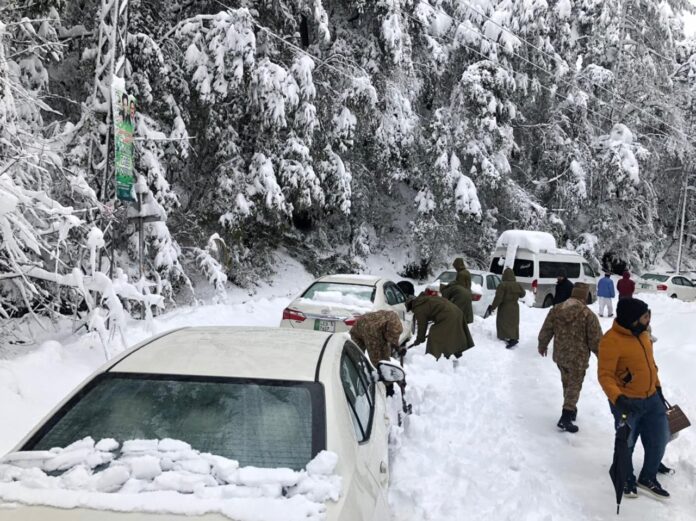The initial probe of the five-member committee to identify the causes that led to the calamity in Murree revealed the failure of relevant government authorities to take adequate measures, despite the warnings issued by the PMD.
It is pertinent to note that the PMD issued an advisory on January 6, deeming the weather unsafe with clear forewarnings about an imminent snowstorm, directing the concerned departments to block the roads leading to the tourist spot, the site of the tragic incident that claimed 22 lives on January 9.
“All authorities concerned are particularly advised to remain ‘alert’ during the forecast period,” the Met Office had stated.
Sources privy to the preliminary findings of the inquiry committee said that the report has also identified a range of other causes that resulted in the tragic incident, including the failure to formulate a joint plan of action to prevent a crisis following the warnings by the Met Office.
The advisory had called for precautionary measures and asked the authorities to brace up for heavy snowfall.
The committee found that the authorities did not stop the entry of vehicles into Murree after the town reached its parking capacity. The contingency plan was not prepared to deal with a crisis situation, and preventive measures such as putting the vehicle-lifters on alert and deploying the traffic police were not taken.
The committee further discovered that the relevant departments, including district administration and disaster management authorities, did not coordinate to formulate a joint plan of action to prevent a crisis following the severe weather warnings issued by the Met office.The probe also uncovered that the measures were not taken to regulate the influx of tourists and traffic inflow into the resort town of Murree.
“By 6 pm on January 7, more than 30,000 vehicles had entered Murree and the roads were blocked due to heavy snowfall but the administration did not close the routes,” the report pointed out.
Further, the findings of the report highlight that the delayed call to the army for rescue operations, coupled with delayed coordination on emergency, further deteriorated the incident, leading to preventable causalities.
The parking capacity of the vehicles was exceeded by more than 120%, the report disclosed.
It is pertinent to note that each year, during the snowfall season, eight to nine snowfall camps are set up for the placement of heavy machinery and additional personnel are deployed in different areas before the entry of tourist vehicles. However, no such measure had been taken this year.























